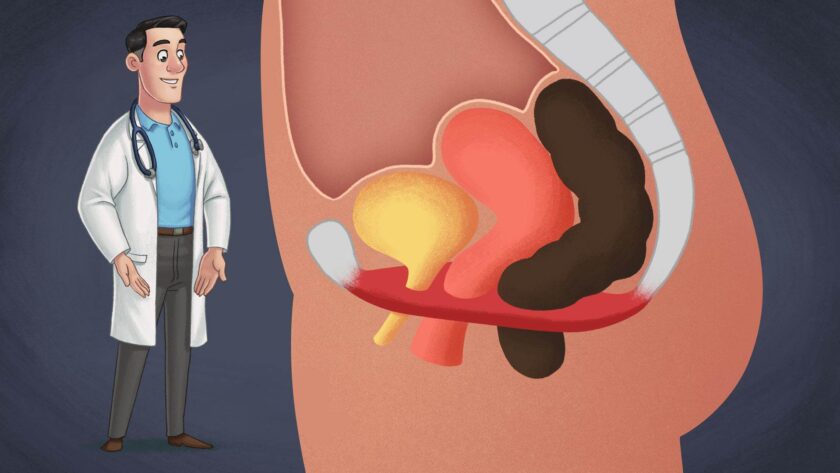As women age, there are many changes that happen to their bodies, both internally and externally. One of the most common changes that women over 50 may experience is urinary incontinence, which can lead to embarrassing and uncomfortable situations. This is why it is essential for women to take care of their pelvic floor muscles through strengthening exercises, as a weak pelvic floor can lead to urinary incontinence.
Urinary incontinence is the unintentional loss of urine, which can occur due to various reasons such as weakened pelvic floor muscles, obesity, childbirth, menopause, and certain medications. Women over 50 are at higher risk of developing urinary incontinence due to the weakening of the pelvic floor muscles caused by hormonal changes and aging.
The pelvic floor muscles are a group of muscles that support the bladder, uterus, and rectum. These muscles are responsible for controlling urinary and fecal continence, sexual function, and stability of the pelvic organs. When these muscles become weak, they are unable to hold urine in the bladder, which can result in urinary incontinence.
Strengthening the pelvic floor muscles can help prevent urinary incontinence and improve sexual function. The good news is that strengthening these muscles is simple and can be done anywhere, anytime. Pelvic floor exercises, also known as Kegel exercises, involve contracting and relaxing the muscles that make up the pelvic floor. These exercises can be done while sitting, standing, or lying down.
To perform pelvic floor exercises, locate your pelvic floor muscles by stopping the flow of urine mid-stream. Once you have identified the correct muscles, contract them for 5-10 seconds, then relax for the same amount of time. Repeat this exercise 10-15 times in a row, three times a day.
In addition to Kegel exercises, there are other ways to strengthen the pelvic floor muscles, such as yoga, Pilates, and pelvic floor physical therapy. These exercises can help women over 50 maintain a strong and healthy pelvic floor, which can lead to improved bladder control, enhanced sexual function, and a better quality of life.
It’s important to note that not all urinary incontinence can be prevented or cured by pelvic floor exercises. In some cases, surgery or medication may be necessary. Women who experience symptoms of urinary incontinence should speak to their healthcare provider to determine the underlying cause and appropriate treatment.
In conclusion, urinary incontinence can be an uncomfortable and embarrassing condition for women over 50, but it is not something that they have to live with. Strengthening the pelvic floor muscles through exercises like Kegels can help prevent urinary incontinence and improve overall pelvic health. With a strong pelvic floor, women over 50 can maintain bladder control, improve sexual function, and enjoy a better quality of life.
How The Pelvic Floor Influences Bladder Leakage
The pelvic floor is a group of muscles that stretch like a hammock from the pubic bone at the front of the body to the tailbone at the back. These muscles support the pelvic organs, which include the bladder, uterus, and rectum. In both men and women, the pelvic floor muscles play a crucial role in maintaining bladder control.
As people age, the pelvic floor muscles can become weakened, leading to a range of issues including urinary incontinence. Urinary incontinence occurs when the muscles that control the bladder are weakened or damaged, leading to involuntary urine leakage.
Strengthening the pelvic floor muscles can help improve bladder control and reduce or eliminate urinary incontinence. This is because the muscles of the pelvic floor act like a sling to support the bladder and other pelvic organs, helping to keep them in the correct position.
There are a number of exercises that can be done to strengthen the pelvic floor muscles. These include Kegels, which involve contracting and relaxing the muscles of the pelvic floor. To do Kegels, people can contract the muscles they would use to stop the flow of urine and hold for a few seconds before releasing. They can repeat this exercise several times throughout the day.
Other exercises that can help strengthen the pelvic floor include squats, lunges, and bridges. Yoga and Pilates classes can also be helpful, as these exercises often focus on core strength and can help improve pelvic floor strength as well.
In addition to exercise, maintaining a healthy weight can also help reduce the risk of urinary incontinence. Carrying extra weight puts additional pressure on the pelvic floor muscles, which can lead to weakness over time. Eating a healthy diet and staying hydrated can also help support overall bladder health.
If urinary incontinence is severe or persistent, it is important to speak with a healthcare provider. They can recommend additional treatments or refer to a specialist, such as a physical therapist who specializes in pelvic floor rehabilitation. With proper treatment and care, many people are able to regain bladder control and reduce or eliminate urinary incontinence.
How To Strengthen Your Pelvic Floor > Use This
Pelvic Floor Strong is the ultimate solution for women who want to stop peeing on themselves. Our comprehensive program is designed to help you strengthen your pelvic floor muscles, reduce bladder leaks and improve your overall quality of life.
Our program is easy to follow and includes a variety of exercises that are specifically designed to target your pelvic floor muscles. By following our program, you can expect to see a significant improvement in your bladder control, as well as an increase in your overall strength and flexibility.
One of the key benefits of our program is that it is completely customizable to meet your specific needs. Whether you are just starting out or have been struggling with bladder leaks for years, our program can help you get the results you need.
Another great thing about Pelvic Floor Strong is that it is completely natural and non-invasive. Unlike other treatments for bladder leaks, our program does not require surgery, medication, or other invasive procedures. Instead, we focus on natural techniques that are safe and effective.
Our program is also backed by scientific research and has been proven to be effective in clinical trials. So you can be confident that you are investing in a program that works.
Finally, Pelvic Floor Strong is incredibly easy to use. Our program is available online, so you can access it from the comfort of your own home. You can complete the exercises at your own pace and on your own schedule, making it easy to fit into your busy lifestyle.
In conclusion, Pelvic Floor Strong is the perfect solution for women who want to stop peeing on themselves. The program is easy to follow, customizable, non-invasive, and backed by scientific research. So why wait? Sign up today and take the first step towards a stronger, healthier you!





